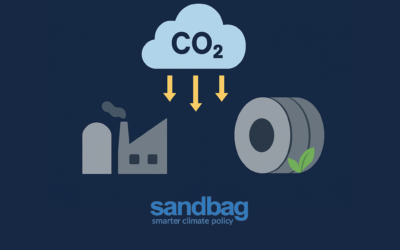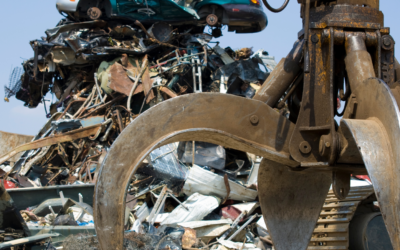This new report from Sandbag, the NGO Shipbreaking Platform, and Università della Tuscia explores how ship recycling could supply high-quality scrap steel to help decarbonise EU steel production.

Steel plays a central role in the European Union’s industrial strategy, and shifting to more sustainable production is essential to achieving the EU’s climate neutrality goals. One of the most effective pathways to decarbonise steelmaking is by increasing the use of scrap steel as it can dramatically reduce CO2 emissions, energy consumption, and water use. Among available technologies for steel production, Electric Arc Furnaces (EAF) stand out for their capacity to incorporate high proportions of recycled steel, achieving emission reductions of up to 80% compared to traditional Blast Furnace processes. However, this shift requires a steady, reliable supply of high-quality scrap.
The steel industry expects a rising demand for scrap in the coming years due to demands for lower carbon footprints and the implementation of new steelmaking technologies. Ship recycling presents a significant and largely untapped opportunity to meet this demand. Ship steel is recognised for its consistently high quality, certified through uniformed standards developed by global classification societies. As the EU/EFTA-owned fleet ages, the availability of end-of-life (EoL) assets is set to grow substantially. The forecasting analysis of the 11,902 EU/EFTA-owned vessels over 10 years old highlights the mid-2030s as the critical period for ship demolitions, with annual retirements exceeding 700 units. This level of recycling demand may translate to an estimated 10–15 million tons of scrap steel recoverable annually throughout the decade throughout the decade, which represents up to 20% of annual scrap steel consumption in the EU.
Beyond recycling, innovative companies are also exploring ways to extend ships’ life cycles, trace materials and components from construction to EoL, and reuse steel plates directly in construction applications. Cross-industrial synergies are needed to unlock the full potential of ship recycling, as well as more research to achieve greater transparency in steel documentation, including contamination risks from coatings, and improved data on future supply of EoL vessels to allow clear forecasting for the demolition market.
To fully harness the potential of ship steel within a circular economy, policies should furthermore support the development of safe and environmentally sound ship recycling, and stimulate material recovery and reuse. Policies should clearly promote the development of best practice guidelines aligned with ship recycling regulations and consistent with the EU’s circular economy principles, including the 9Rs hierarchy and the waste management pyramid. Ultimately, by recognising ship recycling as a valuable source of high-quality scrap steel, the EU can reduce dependence on imports, conserve valuable resources, and advance toward climate neutrality. This transition will foster innovation, strengthen industrial resilience, create green quality jobs, preserve and develop maritime skills, and position ship recycling as a key contributor to enhancing circularity in the maritime sector.
Related publications
Steel emissions standards under threat from flawed “mass balance” proposal
A joint letter from 30+ NGOs warns that coal-based steel could be falsely labelled as green under proposed “mass balance” rules. The signatories call for traceable, credible emissions data in steel standards.
Joint statement urges EU to boost the use of recycled steel scrap in the automotive sector
A new joint statement urges the EU to set binding targets for recycled steel use in cars, citing the climate benefits of secondary steel and the need to reduce demand for high-emission imports.
Towards a minimum recycled steel content in passenger cars: setting an initial target
The EU has around 286 million motor vehicles, and every year, 6.5 million of these are scrapped. If the steel scrap from these end-of-life vehicles (ELVs) is not managed well, valuable resources are lost, harming the environment. With the EU preparing its ELV Regulation, which could set targets for minimum recycled steel content for passenger cars : what should those targets be?



